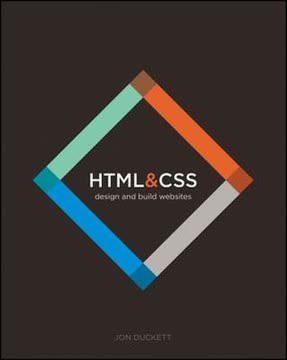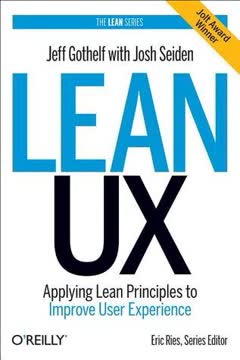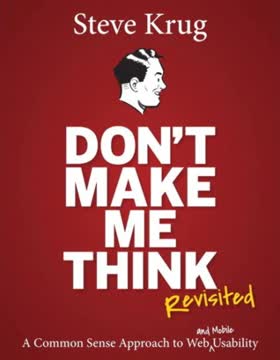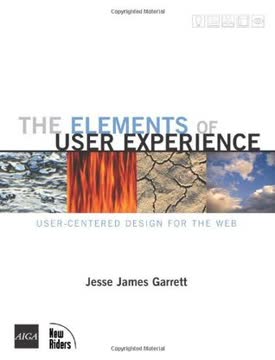نکات کلیدی
1. استراتژی محتوا برای حضور مؤثر در وب ضروری است
استراتژی محتوا برنامهریزی برای ایجاد، ارائه و مدیریت محتوای مفید و قابل استفاده است.
تعریف استراتژی محتوا. استراتژی محتوا به معنای برنامهریزی برای ایجاد، ارائه و مدیریت محتوا بهگونهای است که نیازهای کاربران و اهداف کسبوکار را برآورده کند. این شامل متن، دادهها، گرافیک، ویدئو و صدا در پلتفرمهای مختلف آنلاین میشود.
اهمیت استراتژی محتوا:
- همراستا کردن محتوا با اهداف کسبوکار و نیازهای کاربران
- تضمین یکنواختی در کانالها و پلتفرمها
- بهبود تجربه کاربری و تعامل
- کاهش هزینهها و ناکارآمدیهای مرتبط با محتوا
- پشتیبانی از تلاشهای سئو و قابلیت یافتن
بدون استراتژی محتوا، سازمانها اغلب با محتوای قدیمی، نامربوط یا ناهماهنگ مواجه میشوند که نمیتواند کاربران را جذب کند یا نتایج کسبوکار را بهبود بخشد.
2. با یک ممیزی محتوا برای درک وضعیت فعلی خود شروع کنید
قبل از اینکه شروع به ایدهپردازی درباره محتوای مورد نیاز کنید، باید دقیقاً بدانید چه چیزی دارید.
انجام ممیزی محتوا. ممیزی محتوا یک فهرست و ارزیابی جامع از تمام محتوای موجود در وبسایتهای شما است. این ممیزی بینشهای ارزشمندی درباره وضعیت فعلی محتوای شما ارائه میدهد و به عنوان پایهای برای تصمیمگیریهای آینده در استراتژی محتوا عمل میکند.
اجزای کلیدی ممیزی محتوا:
- ممیزی کمی: فهرست کردن تمام آیتمهای محتوا، شامل URLها، عناوین و متادیتا
- ممیزی کیفی: ارزیابی کیفیت، ارتباط و اثربخشی محتوا
- ممیزیهای تخصصی: ارزیابی جنبههای خاص مانند سئو، متادیتا یا بومیسازی
این ممیزی به شناسایی شکافهای محتوا، تکرارها و فرصتهای بهبود کمک میکند. همچنین به ذینفعان تصویری واضح از چشمانداز محتوا ارائه میدهد و ساختن پروندهای برای ابتکارات استراتژی محتوا را آسانتر میکند.
3. قبل از ارائه توصیهها، اکوسیستم محتوای خود را تحلیل کنید
محتوای وب شما در خلاء وجود ندارد. اهداف سازمانی، منابع واقعی، کاربران شما، خواستههای کاربران، فعالیتهای رقبا و بسیاری عوامل دیگر بر موفقیت محتوای وب شما تأثیر میگذارند.
تحلیل جامع انجام دهید. قبل از ارائه توصیههای محتوا، درک کامل اکوسیستم محتوا ضروری است. این شامل عوامل داخلی مانند اهداف و منابع سازمانی و همچنین عوامل خارجی مانند نیازهای کاربران، فعالیتهای رقبا و روندهای صنعتی است.
مناطق کلیدی برای تحلیل:
- اهداف کسبوکار و اهداف کاربران
- فرآیندهای فعلی ایجاد و مدیریت محتوا
- تحقیقات کاربری و پرسونای کاربران
- تحلیل محتوای رقبا
- کانالها و فناوریهای ارائه محتوا
- الزامات قانونی و مقرراتی
این تحلیل جامع تضمین میکند که توصیههای استراتژی محتوای شما بر اساس واقعیت و همراستا با نیازهای کسبوکار و انتظارات کاربران است.
4. استراتژی محتوای عملی با اهداف واضح توسعه دهید
استراتژی یک برنامه جامع و خوببررسیشده برای دستیابی به هدف یا نتیجه خاصی است.
ایجاد استراتژی جامع. یک استراتژی محتوای مؤثر باید توصیههای واضح و عملی برای ایجاد، ارائه و مدیریت محتوا ارائه دهد. این باید بر اساس بینشهای بهدستآمده از ممیزی و تحلیل محتوای شما باشد.
اجزای کلیدی استراتژی محتوا:
- اهداف محتوا همراستا با اهداف کسبوکار
- تعریف مخاطبان هدف و نیازهای کاربران
- انواع و فرمتهای محتوا
- راهنماییهای صدا و لحن
- توصیههای متادیتا و سئو
- فرآیندهای ایجاد و تأیید محتوا
- برنامههای مدیریت و نگهداری
اطمینان حاصل کنید که استراتژی شما با منابع و محدودیتهای سازمان شما واقعبینانه و قابل دستیابی است. شامل معیارها و زمانبندیهای خاص برای اندازهگیری موفقیت و نشان دادن ارزش به ذینفعان باشید.
5. یک فرآیند محتوای قوی و برنامه نگهداری ایجاد کنید
محتوا بهخودیخود اتفاق نمیافتد.
ایجاد فرآیندهای محتوا. توسعه یک فرآیند محتوای واضح و برنامه نگهداری برای تضمین کیفیت و ارتباط مداوم محتوای شما ضروری است. این شامل تعریف نقشها، مسئولیتها و فرآیندها برای ایجاد، بررسی، تأیید و نگهداری مداوم محتوا است.
عناصر کلیدی فرآیند محتوایی و نگهداری:
- فرآیند درخواست و ایدهپردازی محتوا
- فرآیندهای ایجاد و بازبینی
- رویههای بررسی و تأیید
- فرآیندهای انتشار و توزیع
- ممیزیها و بهروزرسانیهای منظم محتوا
- سیاستهای بایگانی و حذف
ابزارها و سیستمهایی برای پشتیبانی از این فرآیندها پیادهسازی کنید، مانند تقویمهای تحریریه، سیستمهای مدیریت محتوا و پلتفرمهای همکاری. بهطور منظم فرآیندهای خود را بررسی و بهبود دهید تا کارایی و اثربخشی را افزایش دهید.
6. اثربخشی محتوا را اندازهگیری کنید تا ارزش را نشان دهید
اندازهگیری کنید که چه اتفاقی میافتد و چگونه بهبودها بر عملکرد محتوا تأثیر میگذارند، و حمایت و بودجه لازم برای ارائه محتوای شایسته به مخاطبان خود را بهدست آورید.
پیادهسازی معیارهای محتوا. اندازهگیری اثربخشی محتوای شما برای نشان دادن ارزش آن به ذینفعان و اطلاعرسانی بهبودهای استراتژی مداوم ضروری است. یک چارچوب اندازهگیری توسعه دهید که با اهداف محتوایی و اهداف کسبوکار شما همراستا باشد.
معیارهای کلیدی محتوا برای در نظر گرفتن:
- تعامل کاربر (زمان در صفحه، نرخ پرش، صفحات در هر جلسه)
- نرخ تبدیل و تکمیل اهداف
- رتبهبندی موتورهای جستجو و ترافیک ارگانیک
- اشتراکگذاری و تعامل در شبکههای اجتماعی
- بازخورد مشتری و نمرات رضایت
از ابزارهای تحلیلی و روشهای تحقیق کاربری برای جمعآوری دادههای کمی و کیفی استفاده کنید. بهطور منظم عملکرد محتوا را گزارش دهید و از بینشها برای بهبود استراتژی و تاکتیکهای محتوای خود استفاده کنید.
7. تغییر ذهنیت سازمانی برای اولویتبندی محتوا بهعنوان یک دارایی کسبوکار
تا زمانی که به تعهد به محتوای بهعنوان یک دارایی حیاتی که شایسته برنامهریزی استراتژیک و هزینه معنادار است، نرسیم، به تولید محتوای بیارزش در واکنش به درخواستهای اندازهگیرینشده ادامه خواهیم داد.
دفاع از محتوا. برای پیادهسازی یک استراتژی محتوای مؤثر، سازمانها باید ذهنیت خود را تغییر دهند تا محتوا را بهعنوان یک دارایی ارزشمند کسبوکار بهجای یک کالا ببینند. این نیاز به آموزش، دفاع و گاهی تغییر سازمانی دارد.
مراحل برای ارتقاء اهمیت محتوا:
- نشان دادن تأثیر محتوا بر اهداف کسبوکار و رضایت کاربران
- آموزش ذینفعان درباره پیچیدگیهای ایجاد و مدیریت محتوا
- دفاع از نقشها و منابع اختصاصی محتوا
- ادغام ملاحظات محتوا در تمام جنبههای پروژههای وب
- توسعه و اجرای سیاستهای مدیریت محتوا
با قرار دادن محتوا بهعنوان یک دارایی استراتژیک، سازمانها میتوانند منابع مناسب را تخصیص دهند و کیفیت محتوا را اولویتبندی کنند، که در نهایت منجر به بهبود تجربه کاربری و نتایج بهتر کسبوکار میشود.
آخرین بهروزرسانی::
FAQ
What's "Content Strategy for the Web" by Kristina Halvorson about?
- Introduction to Content Strategy: The book introduces the emerging practice of content strategy, focusing on planning for the creation, delivery, and governance of useful, usable content.
- Target Audience: It is aimed at companies, agencies, and beginning practitioners who want to understand what content strategy is, why it’s important, and how to implement it.
- Comprehensive Guide: The book provides a high-level overview of the benefits, roles, activities, and deliverables associated with content strategy.
Why should I read "Content Strategy for the Web"?
- Practical Insights: The book offers practical insights into how to fix web content and make it a valuable business asset rather than an afterthought.
- Strategic Approach: It emphasizes the importance of a strategic approach to content, which can lead to better user experiences and business outcomes.
- Expert Guidance: Written by Kristina Halvorson, a leading content strategist, the book is a trusted resource for anyone looking to improve their web content strategy.
What are the key takeaways of "Content Strategy for the Web"?
- Content as a Business Asset: Treat content as a critical business asset that requires strategic planning and ongoing governance.
- Comprehensive Process: Understand the full content lifecycle, from auditing and analysis to strategy, creation, and maintenance.
- Collaboration and Alignment: Emphasize the importance of collaboration across disciplines and alignment with business objectives and user needs.
How does Kristina Halvorson define content strategy in the book?
- Holistic Planning: Content strategy is defined as the practice of planning for the creation, delivery, and governance of useful, usable content.
- Beyond Tactics: It’s not just about tactics like blogs or social media; it’s a comprehensive plan that aligns with business goals and user needs.
- Content Lifecycle: The strategy covers the entire content lifecycle, ensuring content is treated as a valuable asset.
What are the main components of a content strategy according to the book?
- Creation: Determine what content will be created, why, and how it will be structured and sourced.
- Delivery: Plan how content will be delivered to users, including the tools and channels used.
- Governance: Establish who will maintain the content, how updates will be managed, and what standards will be enforced.
What is the role of a content strategist as described in "Content Strategy for the Web"?
- Content Advocate: The content strategist advocates for content throughout the project, ensuring it aligns with business and user needs.
- Research and Analysis: They conduct research and analysis to inform content recommendations and decisions.
- Implementation Oversight: The strategist oversees the implementation of content strategy, including creation, delivery, and governance.
How does the book suggest conducting a content audit?
- Content Inventory: Start with a content inventory, cataloging all existing content to understand what you have and where it lives.
- Quantitative and Qualitative Audits: Perform both quantitative audits (focusing on data and organization) and qualitative audits (focusing on content quality and effectiveness).
- Specialized Audits: Consider specialized audits for SEO, metadata, and localization to address specific content needs.
What is the importance of a content workflow as per the book?
- Streamlined Process: A content workflow defines how content is requested, created, reviewed, approved, and delivered, streamlining the process.
- Roles and Responsibilities: It clarifies roles and responsibilities, ensuring everyone knows their part in the content lifecycle.
- Efficiency and Quality: A well-designed workflow improves efficiency and content quality by preventing bottlenecks and ensuring consistency.
How does "Content Strategy for the Web" address content maintenance?
- Lifecycle Approach: The book emphasizes a lifecycle approach to content, where maintenance is an ongoing process, not a one-time task.
- Maintenance Plan: It suggests creating a maintenance plan that outlines tasks, roles, and schedules for keeping content accurate and relevant.
- Editorial Oversight: Regular audits and editorial oversight are crucial to maintaining content quality over time.
What are some of the best quotes from "Content Strategy for the Web" and what do they mean?
- "Content is the web.": This quote underscores the centrality of content in the online experience, highlighting its importance in web strategy.
- "Content strategy can help.": A simple yet powerful statement that encapsulates the book’s message that a strategic approach to content can solve many web-related challenges.
- "Content should be your first thought. Not an afterthought.": This emphasizes the need to prioritize content in web projects, rather than leaving it until the last minute.
How does the book suggest measuring the success of a content strategy?
- Web Analytics: Use web analytics to assess user behavior and measure the impact of content on business objectives.
- Success Metrics: Define clear success metrics tied to business goals and user needs to evaluate content effectiveness.
- Continuous Improvement: Implement a continuous improvement process, using data to make informed decisions about content updates and changes.
What is the relationship between content strategy and user experience design in the book?
- Interdependent Roles: The book argues that content strategy and user experience design are interdependent, with content being a key component of the user experience.
- Collaboration Needed: Successful web projects require collaboration between content strategists and UX designers to ensure content supports the overall user experience.
- Beyond Design: Content strategy goes beyond design, focusing on the substance and structure of content to meet user needs and business goals.
نقد و بررسی
کتاب استراتژی محتوا برای وب عمدتاً نقدهای مثبتی دریافت میکند زیرا نمای کلی جامعی از اصول استراتژی محتوا ارائه میدهد. خوانندگان از رویکرد عملی، توضیحات واضح و چارچوبهای مفید آن برای توسعه و اجرای استراتژیهای محتوا قدردانی میکنند. بسیاری آن را برای مبتدیان و حرفهایها مفید میدانند. برخی آن را به دلیل قدیمی بودن یا تمرکز بیش از حد بر سازمانهای بزرگ مورد انتقاد قرار میدهند. تأکید کتاب بر حاکمیت، ممیزی و مدیریت چرخه عمر محتوا بهطور مکرر مورد تحسین قرار میگیرد. بهطور کلی، منتقدان آن را منبعی ضروری برای کسانی که با محتوای وب کار میکنند، میدانند.
Similar Books














